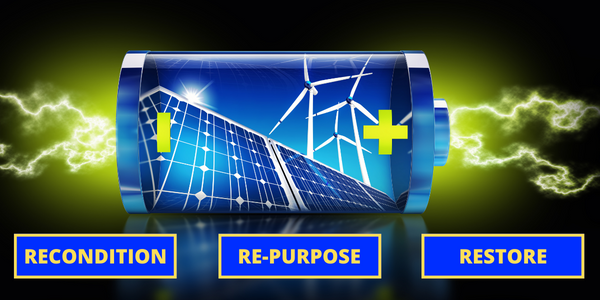A Li-ion battery relies on lithium ions cycling from negative to positive electrodes. While the Li-ion battery is being used or discharged lithium ions move from negative to positive. While charging they reverse direction. Like the markets it serves these are also in a constant state of flux. With the move to EVs the UK aims to be first past the post within the G7 to decarbonise cars and vans. It is projected that all new diesel and petrol cars will be phased out by 2030. As with all new technology EV Li-ion battery manufacturing moves at a fast pace and the market ebbs and flows accordingly.
While it’s clear manufacturers of EVs are ploughing on with development battery manufacturers are reluctant to risk too much capital. Toyota is to invest $35 billion towards battery powered electric vehicles by 2030 and aim to roll out 30 models. The market forecast for Li-ion battery cells in electric vehicles is projected to be worth around $70 billion by 2026. Interestingly it is projected the EV Li-ion battery pack will drop below $100 per KW/hr by 2023. As a result of these falling prices EVs should see price parity with conventional cars by the mid 2020s.
However electric cars are touted as cheaper over their lifetime in light of less maintenance and negligible costs to power. What seems at odds to this is the plummeting stocks of 2 of India’s largest battery manufacturers. Over the past year Amara Raja and Exide batteries have seen their stock plunge 33% and 11% respectively. The concerns appear to point to an uncertain and transitional phase within the auto industry and the risk of technological obsolescence. These companies are involved in lead acid batteries.
Exide has disposed of it’s non core insurance business and partnered with Leclanche SA. Exide now focusing on batteries and together with Leclanche has begun producing Lithium-ion batteries. An announcement had also been made to construct a giga factory prior to the sale of it’s insurance business. Exide is also exploring lithium alternatives, such as bipolar lead-acid batteries. Amara Raja has commenced a pilot project and reached an agreement with the India Space Research Organisation. It hopes to build on the Li-ion battery development project as it transitions in to mass manufacturing. Mindful that with EV battery technology competition is fierce within a fickle buying climate.
The main challenges of Lithium Sulfur batteries is low conductivity and the substantial volume change on discharge. The advantages of a lithium sulfur battery is that it comprises very light active materials. Lithium assumes the negative and sulfur the positive electrode. With Li-S batteries there are no host structures as with lithium ion. For this reason (theoretical energy) density is especially high. That being 4 times greater than that of Li-ion. This is why it has been embraced by the space and aviation industries. The belief is that the most promising Li-s technology is based on solid state electrolyte which overcomes the main obstacles of limited life and high self discharge.
The over riding imperative issue is that the EV Lithium ion battery is potentially seen as a ticking environmental time bomb. It is estimated that by 2030 there will be 145 million Electric Vehicles on the road. However while the eco benefits are clearly evident it is anticipated that over 12 million tons of EVs original power source ( Li-ion battery ) will be retired by 2030. These batteries require large amounts of cobalt, nickel and lithium, the mining of which brings hug environmental, climate and human rights implications. Asides from the end of life mass of waste compounded by how this waste will be managed.
Looking forward the shift together with forward thinking and planning has to be away from lithium ion options. There has to be less reliance on mining (cobalt, nickel and lithium) and more emphasis on alternative materials and second life usage. While there are vast sums being swallowed up by research centres and waste management start ups should recycling be the first go to. The circular economy has robust views that materials should first and foremost see viable use for longer. Much of the capacity within an end of life EV remains albeit not the requisite EV power.
Yet these Li-ion battery EV units can assimilate a second life storing off grid power from wind farms and solar panels. Trials are already picking up momentum and are currently running. One trial in Melilla, Spain which is outside the Spanish national grid. Another where Renault has teamed up with a UK energy company to develop home energy storage systems. The real bonus of second life stationary energy storage would also displace toxic lead acid batteries.

